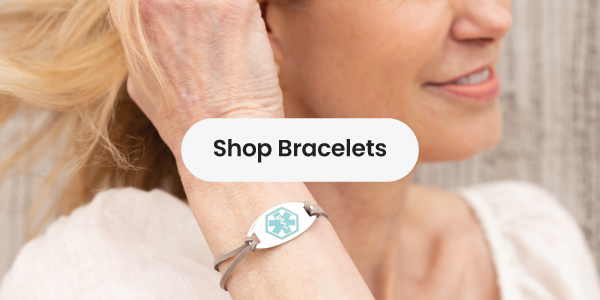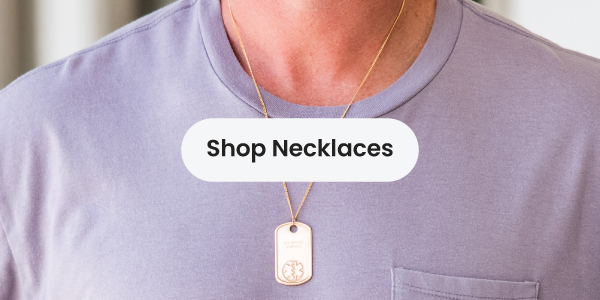Are Medical IDs Useful in Emergencies? And Other Questions About Medical IDs
Are Medical IDs Useful
in Emergencies?
Yes, in an emergency, your injury may leave you unable to communicate vital information like medical conditions, medications, or allergies. First responders could find you confused, unconscious, or unable to speak.
A medical ID bridges that gap—clearly sharing critical details when you can’t. Just like wearing a watch to tell time, wearing a medical ID is a simple habit that can have life-saving consequences.
Emergencies can happen anytime, anywhere. A medical ID gives you the freedom to live independently, with the peace of mind that you're always protected.
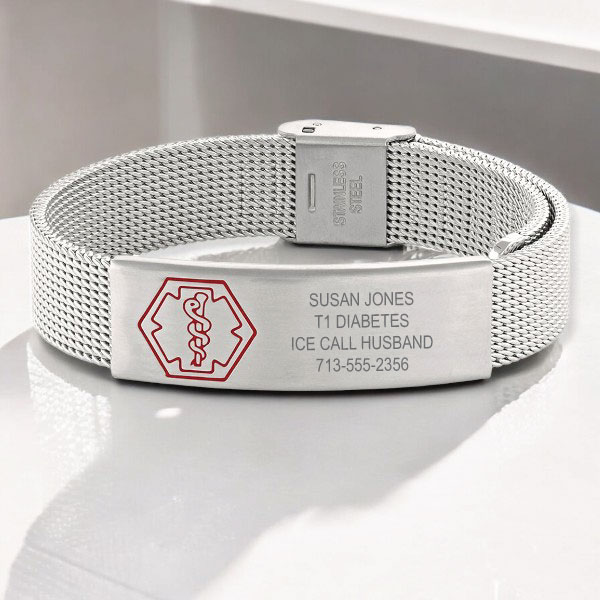

It is crucial to wear a medical ID right after receiving a diagnosis for any chronic disease or illness. Not wearing a medical ID can lead to:


Misdiagnosis of symptoms


Complicate or increased severity of minor emergencies


Delaying appropriate treatment & care


Unnecessary hospital admissions


Exposure to medications & treatment that you may be allergic to, contraindicated for your current medications, or are harmful for your health condition


For people living with mental health conditions, not wearing a medical ID can risk miscommunication with responders, including law enforcement


Voices from the Community
Every year, Universal Medical ID asks customers of how their medical IDs help them live their life with more peace of mind. According to Amanda Fones, “Having medical ID jewellery was a necessity for my life and became crucial to myself and my family.” As someone with a connective tissue disorder, Amanda loves the security and peace of mind that her medical ID necklace provides.
Another medical ID wearer, Jonathon Kelly recalls how a medical ID alleviated his fears after undergoing a splenectomy. "I was immediately reassured there was a way I could tell people about my condition in an easy visual way. It definitely helped take away some of that fear I felt in the early days and is a reassurance to me that if I am ever ill in the future, I know that I will receive the right treatment.”
Do you want to hear more from Universal Medical ID customers? Read more medical ID life stories here.
Here are a few of the top medical ID questions we at Universal Medical ID get asked and answers to help:
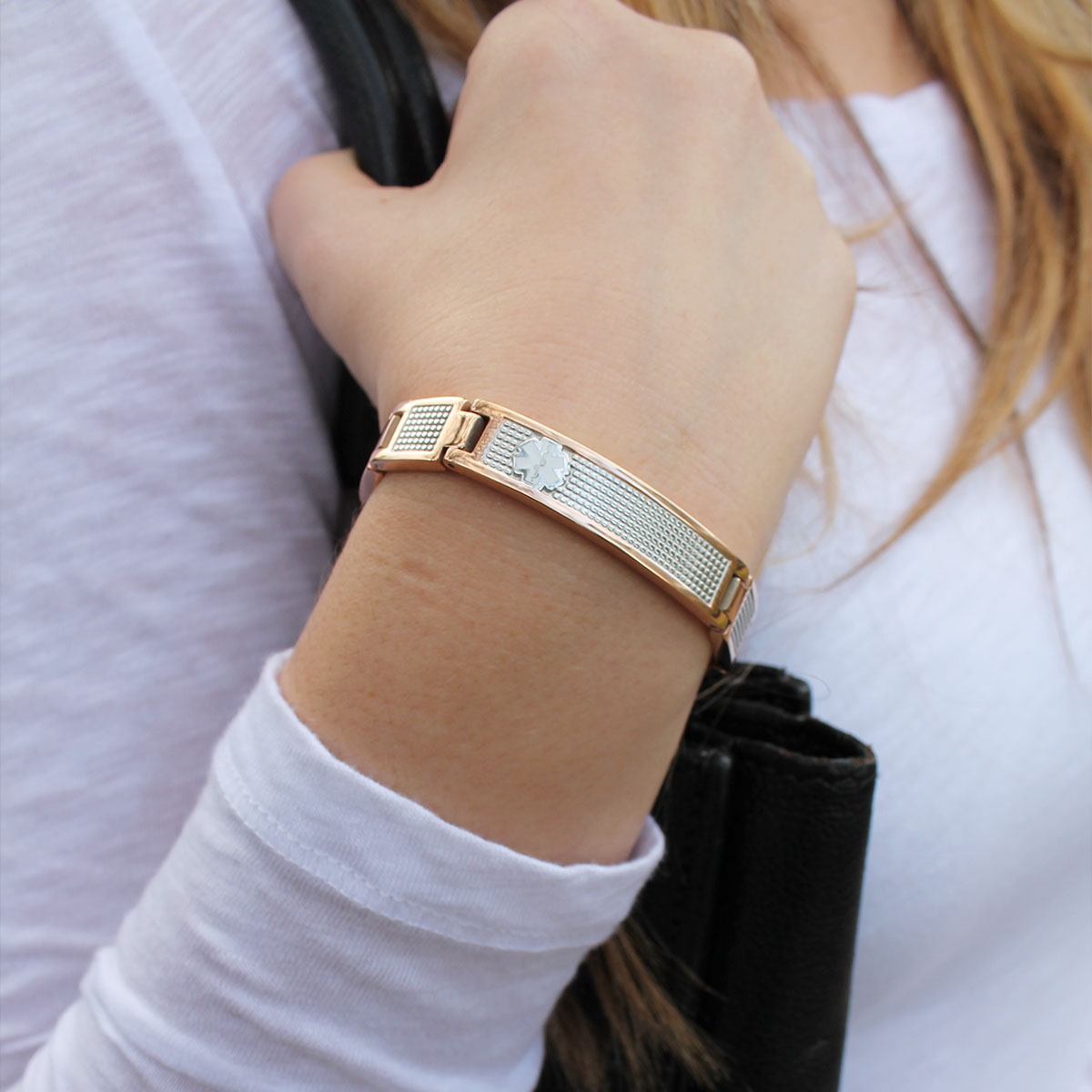

Are emergency services aware of medical IDs?
According to Verywell Health, a common place that paramedics usually check for medical information is on a person's body. Other places include the fridge and front door (if the emergency happened at home), your wallet or purse, and increasingly common is to check a person’s cellphone.
In a survey conducted by Universal Medical ID, more than 95 percent of respondents look for a medical ID during emergencies. The Centers for Disease Control and Prevention recognise medical alert identification bracelets and necklaces as basic Personal Health Preparedness Needs to protect health and safety in an emergency. A properly trained emergency responder should notice medical alert jewellery around the neck or wrist. Depending on their training, this could be noticed during their assessment when a patient is physically examined from head to toe.
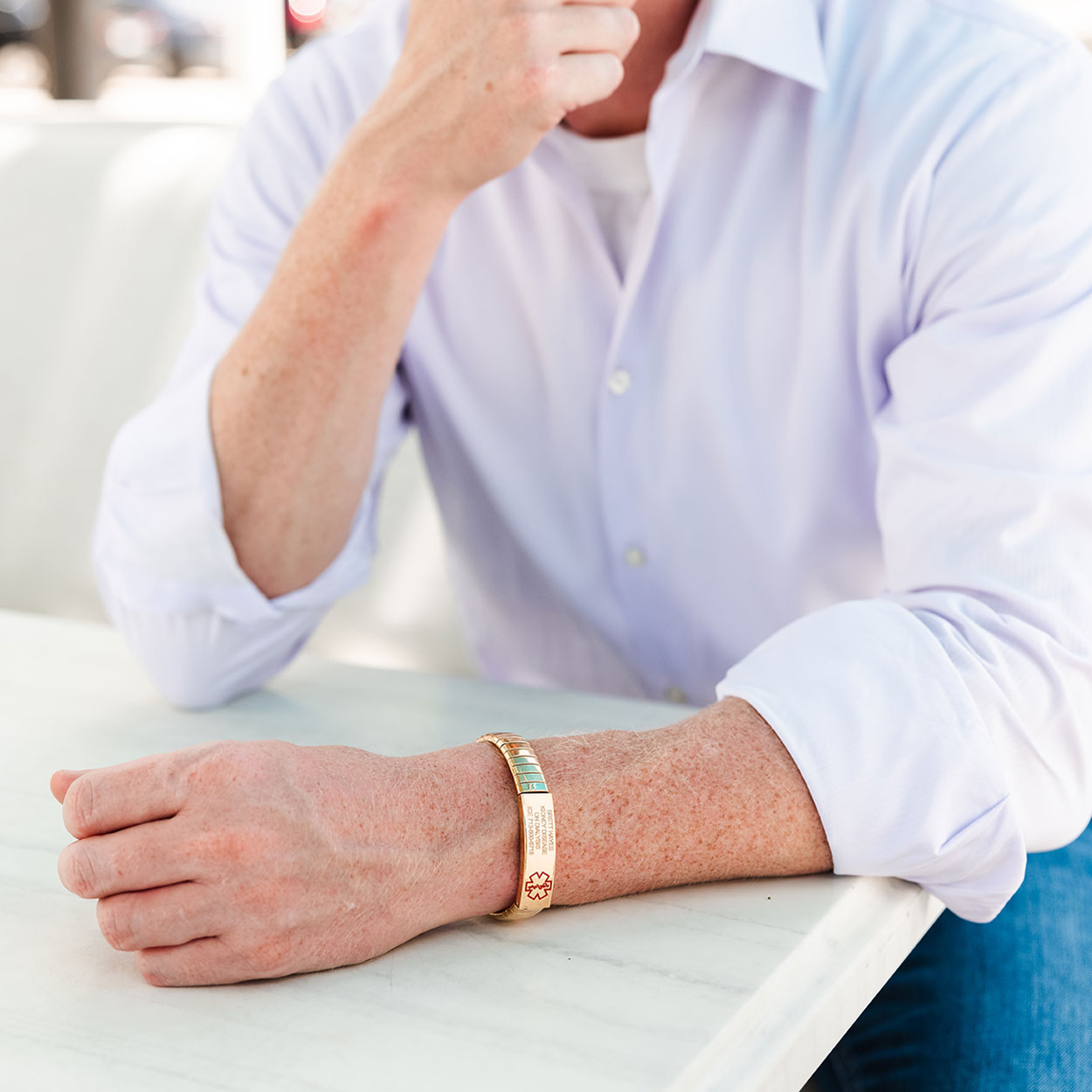

What kind of medical ID is the most recognisable to EMTs and paramedics?
A medical ID worn around the wrist or neck is recommended. Most emergency responders are trained to look for medical identification worn as a necklace or bracelet. They are easier to find when responders perform a physical assessment in an emergency.
Back-up IDs such as wallet cards or phone medical IDs are also good to have in case you forget to wear your medical ID jewellery or if it gets lost or separated from your person.
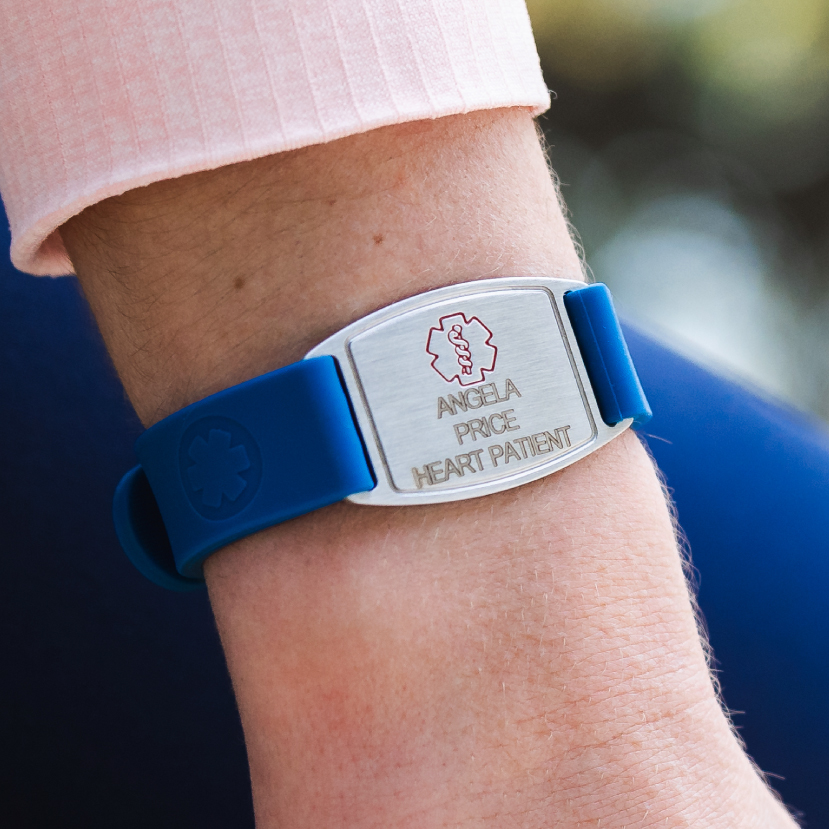

What is relevant to put on an emergency ID?
Your medical ID should include your name, medical conditions, allergies, and medications. Also engrave other information that can impact the way that EMTs should treat you in an emergency. An example is if you have a medical device such as a pacemaker, missing organ, or if you have a DNACPR request.
It is also advisable to include emergency contacts such as a parent, family member, friend, or doctor that responders can easily reach out to. Here is a complete guide on what to engrave on an emergency medical ID bracelet or necklace.
Medical alert jewelry is the most effective when it reflects accurate, comprehensive, and up to date information about your health. Verify it regularly and ask your doctor for advice.
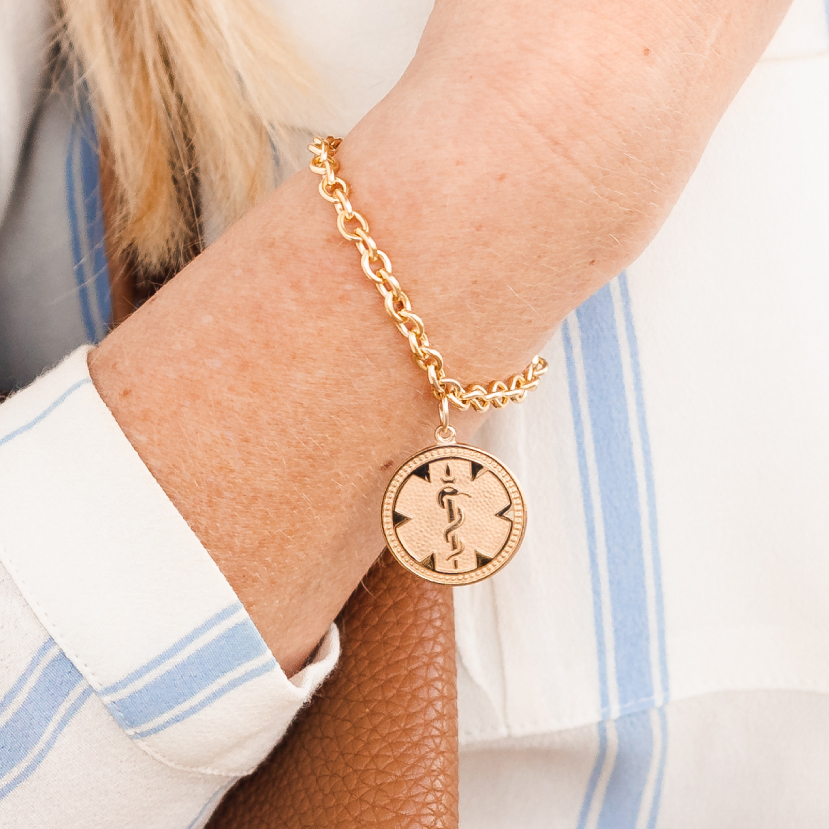

How often do people ask you about your medical alert bracelet?
Medical IDs come in lots of different styles. Depending on your preference, a medical ID can look like regular piece of jewellery to be discreet. For example, they can be customised to have an embossed medical emblem instead of the more common red colour or have the engraving on the back of the ID where it isn’t immediately viewable. The frequency of being asked about a medical ID can easily be the same as how much you'd be asked if it were ordinary jewellery. IDs can and should be a reflection of your personality and style preference so that you always wear it.
Some medical ID wearers use their ID to start a healthy conversation and raise awareness of their medical conditions. For this, some will prefer engraving on the front of the ID with the red medical emblem so that it is easily recognisable by everyone, not just by emergency responders.
Read our guide on how to choose the best medical ID for you.
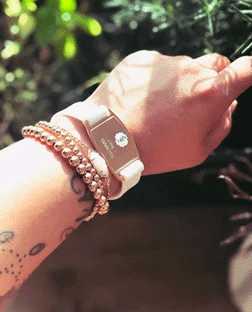

Photo credits: @_thatgirlrach
Should I get a medical tattoo vs. jewellery?
According to Rod Brouhard, an EMT-Paramedic and author of "Disaster Preparedness: A Living Free Guide", medical jewellery is quite popular and a good idea if you have any sort of medical diagnosis that is important for emergency personnel to know about. However, tattoos are something that medical personnel may not notice or interpret accurately, especially if you have multiple tattoos.
Some patients have both a tattoo and ID on them but if you have to choose, remember that medical jewellery is easier to update and EMTs are trained to look for them. Outdated medical information can be as dangerous as not having a medical ID, if not more so.
I can't decide between a medical ID that is more fashionable vs. one that is more generic and obvious?
The best medical ID for you is the one that you will actually wear all the time. It is important to consider your personal style and comfort when choosing a medical ID. All Universal Medical IDs have the Star of Life symbol that represents emergency medical services. This symbol is found easily on the front of each medical ID regardless of their style or colour.
Having peace of mind is one of the most valuable benefits of wearing a medical ID. If you are still concerned that a stylish ID will not be recognised in an emergency, it is a good idea to choose a more classic looking medical ID with a bigger tag and a red emblem. If you have a lot of medical conditions or complicated medications, it’s generally advisable to opt for a medical ID with the most engraving space.

 - US
- US  - Canada
- Canada  - Australia
- Australia 
